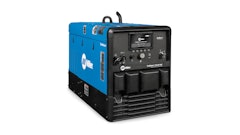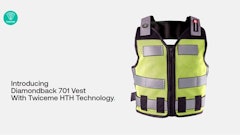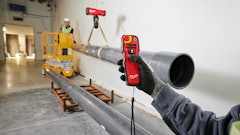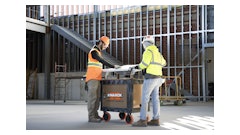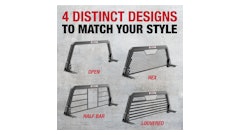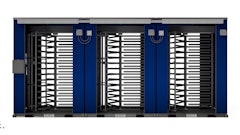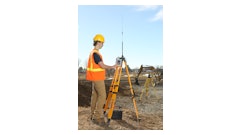It started with blades, but it seems that low price has now become the key factor in the walk-behind saw market as well.
“Saws are getting to the point now where it’s becoming a commodity market,” says Jeff Durgin, sales and marketing manager for Multiquip’s Concrete and Masonry Technologies division. “It seems price now is the most important feature we can offer.”
Imports are driving costs down, with many machines coming in from overseas. Those companies are usually saving money on both materials and labor.
“It’s definitely cost-driven,” says Ed Varel, engineering project manager at Stone Construction Equipment. “People are looking for a basic machine to cut a straight line with more emphasis being placed on the blade.”
For domestic manufacturers, the challenge has become getting contractors to look beyond the initial cost of a machine and think about things like quality and customer service.
“We have technicians that will come to the jobsite and look at the problem,” says Thom Fisher of Diamond Products. “If there’s a specific problem on the job,we can deal with that. We try to kill the importers with service.”
Fisher says Diamond Products can respond quickly to the market because it has an aggressive sales force that is out on jobsites everyday.
“We know the challenges that contractors are facing,” he says. “We talk to them everyday.”
When buying a walk-behind, it’s important to think about how long and how often you are going to be using it, Multiquip’s Durgin says.
“Most imported saws are lighter — that’s one of the areas they cut costs,” he says. “At first, that might sound good, but that extra weight gives you a lot more cutting performance.”
The heavier material can also mean a longer life for a properly maintained saw.
“Maybe it costs you 25 percent more initially, but will it last you five, six, seven years longer?” Durgin says.
Although prices may continue to drop in the short term, they’ve probably pretty much bottomed out, Durgin says.
“Saws are already going out without any bells or whistles,” he says. “The saws on the market now are about as stripped down as you can get.”
Safety and comfort
While cost is the No. 1 factor many contractors use in making their decisions, there are other features contractors are demanding.
“Operator fatigue is an issue, especially as we start dealing with larger models,” Fisher says. “We’ve introduced a series of saws built with a differentiated drive system, so no heavy lifting is required to turn the saw.”
Contractors are also concerned about safety.
“This is a machine that can cut through concrete and asphalt, so they can potentially be dangerous,” Varel says. “We incorporate things like emergency stops and easy-to-operate controls to protect the users.”
For the last few years, silica dust has been a hot topic of conversation as the Occupational Safety and Health Administration looks at revisiting the regulations on how much users can be exposed to. Depending on the model, Stone offers either a gravity-fed or pressurized water system to reduce dust. Similar systems are in place on other companies’ saws as well.
“We also reinforce that with warning labels on the machines reminding contractors to wear the proper safety gear, such as goggles and masks,” Varel says.
Reducing maintenance has also been a focus for Stone, with more greasable points to keep things running more smoothly. All of Stone’s models also have a heavy, reinforced box frame to help support the blade, which means less blade deflection and a longer blade life.
Another way contractors can save time is with dual blade shafts that allow them to cut with two different blades without having to take the time to switch blades.
“Last year, we introduced a dual blade shaft diesel powered saw,” Fisher says. “It’s been very well received in the market. The pros like it because it saves them time.”
That feature is something that will probably become very popular with those contractors that have to do a lot of heavy duty cutting, Fisher says.
Stone CS1 Saw Devil
The CS1 Saw Devil lightweight push saw is available with an 11-hp Honda engine equipped with a cyclone filter system.
• Accommodates 12- and 14-in. blades
• Maximum depth cut of up to 4 5/8 in.
• Four other engine options available
Soff-Cut X-150 Prowler
The X-150 Prowler is the lightest push saw in the Soff-Cut lineup.
• Patented low-noise and low-dust blade block system
• Comes with a 4.5-hp engine, making it ideal for residential or light commercial applications
Stow Cutoff Saws
The 21-lb. SHS62 and 23-lb. SHS81 gas cutoff saws slice concrete, tile, ceramics, pipe and more.
• Reversible blade flange handles 20mm and 1-in. blade arbors
• Operate 12- or 14-in. blades
• Triple-stage air filtration system
• 4.7-and 6.3-hp, two-cycle, EPA-approved gasoline engines
• Reversible cutting arm
• Easy-adjust cam V-belt tensioner and sturdy front roller bar
General Equipment CS8
The CS8 Random Crack Saw from General Equipment Co. is designed to follow random crack patterns in concrete surfaces.
• 8-in. diameter, dry cut-type diamond blades produce smooth-sided cuts for proper crack-filling procedures
• 11-hp Honda engine
• Maximum cutting width is 1/2 in. and maximum straight-line cutting depth is 1 1/2 in.
Shave Away Saw Muzzle GP
The Saw Muzzle GP from Shave Away is designed to collect dust created by gas-powered concrete cutoff saws with blade diameters from 12 to 20 in.
• Fits Stihl, Partner, Target and many more models
• Made of fiber-filled ABS plastic
• Up to 95 percent efficient when used with standard 2-hp industrial vacuum
ICS Blount Redzaw
The Redzaw RZ60 and RZ80 utility gas saws utilize diamond chain technology, while the RZ60C chop saw accepts up to a 14-in. circular diamond blade.
• RZ60 is powered by a 64cc, 4.2-hp, two-cycle gas engine
• RZ80 offers more power and depth of cut with the same utility and features
• Advanced air intake and filtration system for wet cutting aggregates
• Designed to cut masonry materials, concrete and stone
RGC HydraSaws
RGC HydraSaws are available in four models with cutting depths from 5 1/4 to 9 1/2 in.
• Cut concrete, stone, masonry, brick, block, rebar, pipe, etc.
• For horizontal, vertical, wet, dry and underwater cutting
• Heavy-duty motor provides constant cutting speed and torque
• No excessive noise, vibration or exhaust fumes
• Addition of a small flow divider allows use from excavator, skid loader, tractor, etc.
Efco 980TTA
The Efco 980TTA gas-powered cutoff saw features a triple-stage air filtration system including a large oiled foam prefilter, a high-density canister filter and nylon mesh screen.
• Decompression valve for easy starting
• 12- or 14-in. blade capacity
• Reversible cutting arm
• 1-in./20mm blade collar
• 23.8-fl.-oz. fuel tank for extended run time
Target Pro 66
The Pro 66 concrete saw is powered by a 66-hp John Deere four-cylinder turbocharged diesel engine.
• Patent-pending electrical tracking system instantly adjusts saw tracking with the touch of a switch
• 16 V-belts transmit more power to the blade shaft
Makita industrial saw
Makita’s new 73cc multi-purpose industrial saw, model DPC7311, is designed for cutting stone, masonry, steel and more.
• Advanced airflow system improves air intake and filtration for longer life
• Reinforced aluminum blade guard has 70-degree range of limitless positioning
• Quick-switch cutting arm for horizontal and vertical applications
Stihl TS 700 Cutquik
The TS 700 Cutquik is powered by a 6.7-bhp, 98.5cc stratified charged engine that provides 9,800 rpm.
• X2 long-term air filtration system maintains airflow with 99.96 percent cleaning efficiency
• Five-point, dual element vibration control system
• Heavy-duty steel cart provides improved handling and cutting performance with a forward machine weight orientation
• Handle-mounted depth command lever on cart allows for rapid adjustment
Wacker BTS Series
The 12- and 14-in. BTS portable cutoff saws utilize a heavy-duty plastic to reduce weight.
• Cutting depths of 3.8 to 5 in.
• 4.7- or 5.6-hp gasoline engines
• Ergonomic design produces less vibration to the operator
• Electronic ignition
• Multiple-stage filtration system
• Large silencer muffler
• Carburetor and fuel pickup system allow operation in any position
• Fingertip throttle control




















